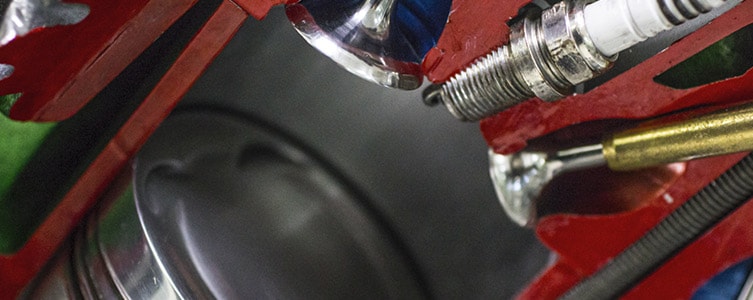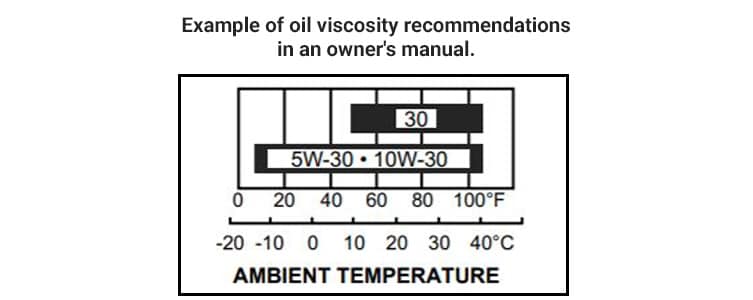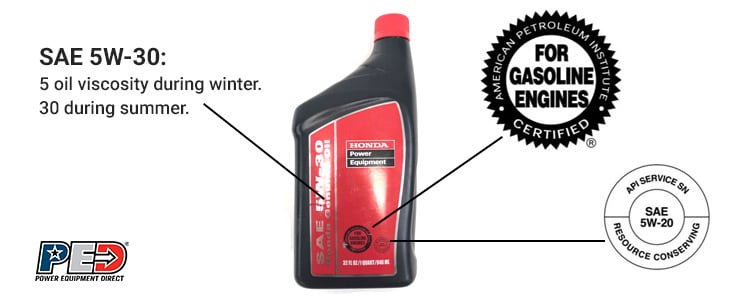
What is Engine Oil?
Whether or not you know anything about engines, if you own a car, lawn mower, or other piece of power equipment, you deal with oil. Even the most mechanically clueless individual is trained from a young age to have oil changes done once or twice per year at a minimum for power equipment and every 3000-7000 miles for automobiles and trucks.
For car oil changes, most of us drop our vehicle off at the shop and watch daytime TV in the waiting area until it’s done. But what about your smaller backyard power equipment? It’s time to learn a little more about oil.
What is Oil Used for?
The main purpose of motor oil is to lubricate all the metallic parts in an engine to prevent them from rubbing against each other. Think of the bones in our body or of a squeaky door caused by wood rubbing against wood. In both examples, lubricant is needed to prevent the moving parts from rubbing each other away. That’s why you may add lubricant to door hinges, and our bodies have joint fluid to prevent bone damage.

The same is true for engines. Without an oil coating, the piston would rub against the piston chamber, the crank shaft would rub against the connecting rod, and so on, eventually causing engine failure. Furthermore, by helping the engine parts move more easily, oil assists with fuel efficiency.
Oil also cools the engine by collecting and dissipating some of the internal heat—kind of like how ice-cold water helps cool you down on a hot day. Besides collecting heat, oil picks up debris within the engine and carries it to the oil filter, so it has a cleaning function.
What Kind of Oil Do I Need?
Whether you’re looking for car oil or small engine oil for your mower, finding the right kind is simple. Always follow your owner’s manual oil requirements without question. Your engine was designed for a specific type of motor oil. Using anything else could seriously harm your equipment.
Unfortunately, if you don’t understand oil ratings, your manual’s directions may sound like a foreign language. It’s important to understand a few basic concepts about oil ratings and grades.
2-Stroke vs 4-Stroke Oil
If you haven’t read our article on the difference between 2-stroke and 4-stroke engines, I recommend you check it out. Since oil is mixed with the fuel in 2-stroke engines but added separately in 4-stroke engines, there are different properties to each.
Oil for 2-stroke engines has more additives and is more refined then 4-cycle motor oil. Using either in the wrong type of engine is harmful, especially putting 4-stroke oil in a 2-cycle engine. Typically, a small engine oil bottle label will list the engine cycle it’s designed for in large font. If not, read the fine print.
Oil Service Category
The American Petroleum Institute (API) rates each type of oil for performance using two letters. The first letter is always “S” and stands for “service.” The second letter is what differentiates each rating and currently ranges from “A” to “P.” So, the most current rating would be “SP.”
Each rating corresponds to a set of engine manufacturing years. For example, a rating of SA means the oil works only on antique engines built before 1930. Only ratings from “SJ” onwards are current, and your owner’s manual will list which one your engine needs.
Always make sure your oil is API certified for gasoline engines by looking for an API Certification Mark.
What is Viscosity?
Most important when choosing engine oil is its viscosity or “weight.” Viscosity is a fluid’s resistance to flow. Think of the difference between honey and water (besides honey being sweeter). If you spill or pour honey, it moves a lot more slowly than water because it’s more resistant to movement, or more viscous.
Based on that definition, do you think a more viscous or less viscous oil would be better for your engine? If you answered, “it depends,” then you’re right. If the oil is too viscous (heavy and slow-moving), it won’t circulate around the engine well. On the flipside, if the oil isn’t viscous enough (light and fast-moving), it will be prone to leakage and won’t provide a good coating.
So, let’s say you try to solve the problem by creating a “Goldilocks” oil that is “just right” in its viscosity. You still haven’t accounted for temperature. The hotter it gets, the less viscous or lighter the oil gets because its molecules start to move faster. The colder it gets, the more viscous or heavier the oil gets because the molecules slow down.
To solve the problem of temperature, engineers have formulated multi-viscosity oils to behave less viscously during colder months and more viscously during warmer months. The science behind this is complicated. Just know that it’s done by mixing certain additives into the oil.

An oil’s viscosity is indicated by its viscosity label on the bottle. The label usually includes “SAE,” which stands for “Society of Automotive Engineers” and a number. The higher the number, the more viscous the oil. For example, an SAE 30 oil is more viscous than an SAE 10 oil. If you live in a hot climate, you would typically get a higher number viscosity, while a consistently cold climate would beg for a lower number viscosity.
But what about most climates that have hot summers and cold winters? That’s where the specially formulated oil comes in which is rated with two numbers, i.e. SAE 5w30. Here the “w” stands for winter, so the label indicates that the oil will have a 5 viscosity during winter and a 30 viscosity during summer.
The lower winter viscosity is crucial for cold starts because the oil needs to be thin enough to get picked up by the oil pump and distributed around the engine. In recent years, the oil industry has been favoring lower viscosity oils because they increase engine efficiencies. Still, hotter months require higher viscosities to prevent seal leakage.
Note that for power equipment that you only use during warm months (lawn mower, aerator, etc.), all you will ever need is an appropriate single-viscosity oil because the engine won't be running in the cold months. Same applies for using a snowblower during winter.
Now that you understand viscosity, you may feel emboldened to go out and buy oil without checking your owner’s manual. Don’t. The owner’s manual knows which oil you need and will typically include a graph or chart that recommends certain viscosities depending on temperature.
What do the numbers on oil mean?
Here is a graphic that helps illustrate everything we discussed above as it pertains to understanding an oil label.

Should I Use Synthetic Oil?
In recent years, debate has grown around the use of synthetic vs. traditional mineral motor oils. Without getting too much into chemistry, synthetic oil is artificial. It is still made with a refined base oil, but the chemistry is manipulated to improve performance and life. Furthermore, there are synthetic oil blends that include a combination of synthetic and mineral oil.
You may be asking, “should I use synthetic oil?” Although significantly more expensive, synthetic oil lasts longer, so fewer oil changes are needed which means you’ll probably break even. It is also the best oil if you run your engine under extreme conditions. For example, if you’re towing an RV across the country or do commercial lawncare, you will get better efficiency and performance from synthetic oil. If you don’t run your engine too hot, though, mineral oil will work just fine.
As with everything else, follow your manufacturer’s recommendations when it comes to choosing synthetic vs. mineral oil. Some modern engines require synthetic oil, while others can go either way. Usually, an engine built for mineral oil can run just fine on synthetic oil, but not the other way around!
Small Engine Oil and Equipment Type
It’s also worth noting that oil formulas vary based on the equipment you’re running. The common example is marine oil for outboard motors, which is specially formulated to handle high-power, wet environments. Using motor oil designed for cars or yard equipment could spell disaster for your boat.
Grease Your Engines
After reading this engine oil guide, you should feel more confident in shopping for your next bottle of oil. Remember, always consult your owner’s manual for specific requirements.

